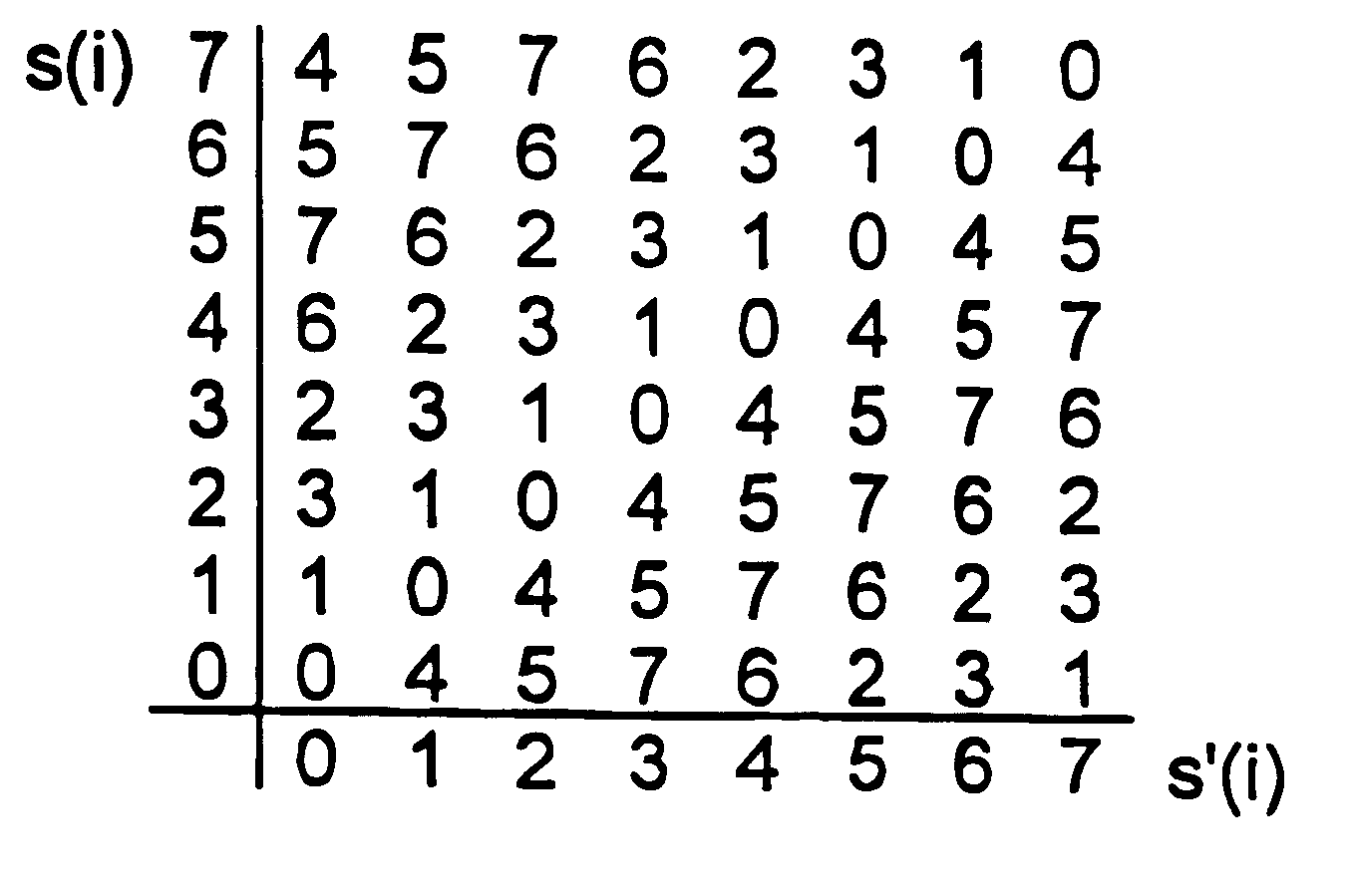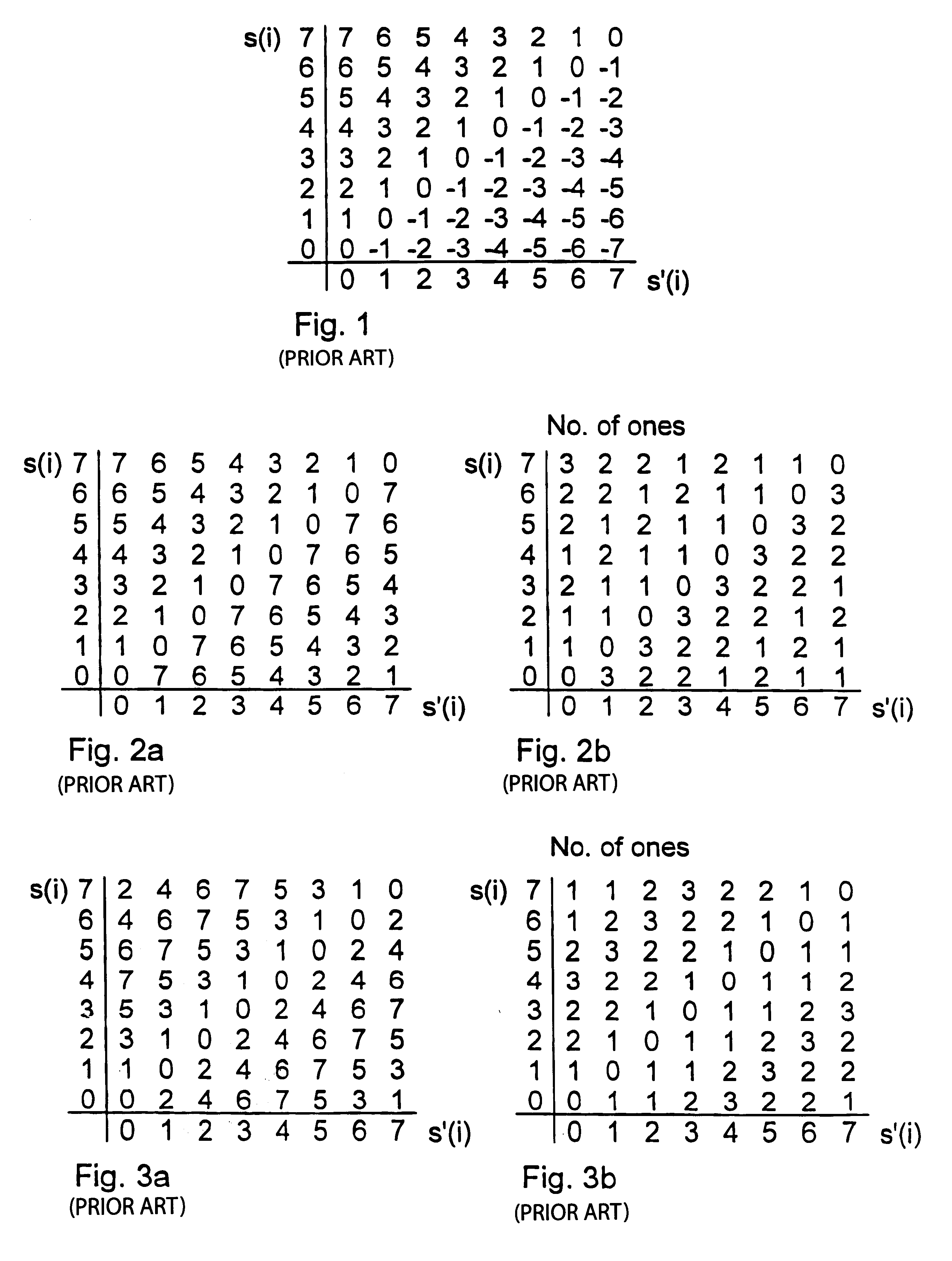Non-reversible differential predictive compression using lossy or lossless tables
a differential prediction and table technology, applied in the field of non-reversible differential prediction compression using lossy or lossless tables, can solve the problems of increasing the complexity of the architecture, reducing the efficiency of the computation, and requiring a large amount of data
- Summary
- Abstract
- Description
- Claims
- Application Information
AI Technical Summary
Problems solved by technology
Method used
Image
Examples
Embodiment Construction
In general, there are many ways of constructing invertible permutative relations. However, in the case when the object is to obtain an output stream compressed as much as possible, the table should be chosen in such a way as to optimise the output stream O with respect to the aim of the procedure. For example, to decorrelate the bit planes of O, one can Gray code the entries of the table of FIG. 2a, leading to the table of FIG. 5. Such a table would provide a much better output stream from a compression point of view and would therefore be preferable to the tables shown in the FIGS. 2a, 3a, and 4a.
In FIG. 6a, an even better embodiment, where the table is an invertible non-permutative code, is shown. The table of FIG. 6a is better in the sense that small differences are coded with a minimum number of ones, see FIG. 6b, which hence increases the compression ratio. The property being exploited in this case is that the statistical distribution function for the pair [s(i), s'(i)] is stro...
PUM
 Login to View More
Login to View More Abstract
Description
Claims
Application Information
 Login to View More
Login to View More - R&D
- Intellectual Property
- Life Sciences
- Materials
- Tech Scout
- Unparalleled Data Quality
- Higher Quality Content
- 60% Fewer Hallucinations
Browse by: Latest US Patents, China's latest patents, Technical Efficacy Thesaurus, Application Domain, Technology Topic, Popular Technical Reports.
© 2025 PatSnap. All rights reserved.Legal|Privacy policy|Modern Slavery Act Transparency Statement|Sitemap|About US| Contact US: help@patsnap.com



